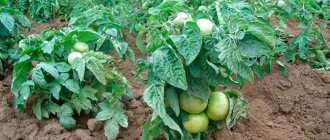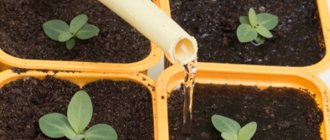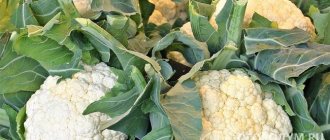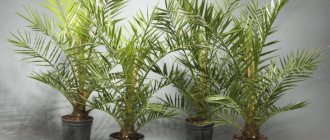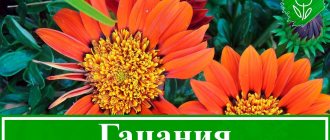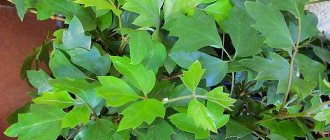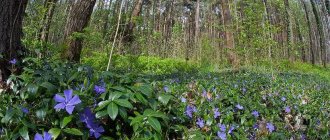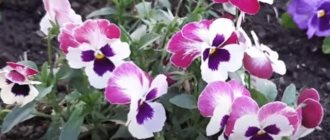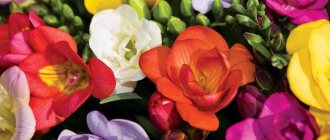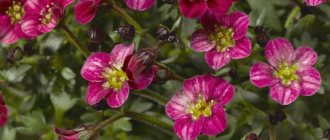In Arab countries, dates are called “bread of the desert”; they have been grown in these hot countries for more than 7 thousand years. For an ordinary European person, these fruits of palm trees are considered truly exotic. Since new varieties are constantly being developed, today a very large number of varieties of this dried fruit have appeared. Here we will describe the best varieties of dates, which are widely consumed not only in the Middle Eastern countries, but throughout the world.
Some numbers
Over such a long period of existence of dates, many varieties were developed. Today there are more than 450 varieties of this fruit. The main exporter is Saudi Arabia; more than 18 million date palms grow in this country. In total, they produce 648,000 tons of crops annually.
The production and cultivation of dates is controlled at the state level, and large amounts of money are regularly allocated for fertilizing and planting new palm trees. This is all done to ensure that this crop brings money to the country and occupies an important place in its economy.
But also quite a large number of date palms are located in neighboring countries. Therefore, in order to understand which dates to choose, you need to familiarize yourself with the most common varieties.
Why do date palm leaves turn dark?
The culture is very attractive to insects such as:
- mealybug;
- spider mite;
- Scale insects.
Infestation by these pests leads to darkening and drying of the leaves. You can get rid of the scourge using a solution of laundry soap or diluted garlic juice. You can use an insecticide, such as actellik.
A healthy plant serves as decoration for residential premises and recreational areas in institutions. This is where the benefits of palm trees end. You cannot expect flowering and fruiting from them. However, the decorativeness of the exotic completely compensates for this shortcoming.
Mazfati
This variety of dates is considered the most popular in Iran and is exported throughout the world. Mazfati is divided into more than 20 varieties. Dates range in color from light brown to almost black. The taste contains pleasant caramel notes, and the flesh is juicy and moderately sweet, with a meaty consistency. The size of the fruit can reach almost 5 cm. In the CIS countries, this variety of dates is better known as “paradise”. The fruit is rich in the following vitamins:
- A1;
- WITH;
- B1, 2, 3, 5;
- potassium;
- iron.
If the product is stored at a temperature of about +5 degrees, then it can retain its beneficial properties for one year.
Recommendations for cultivation
The most favorable time to plant a palm tree is in February or March. You don’t need to buy seeds specially; you just need to buy dates, eat them, and use the seeds for germination.
To grow a date palm, one seed is enough. But it must meet a number of requirements: be freshly extracted, have no signs of damage or exposure to diseases or insects. In addition, the fruit should not be heat-treated. Seeds from fruits that are more than one year old may lose their germination properties.
First you need to place it in a container with warm water for three to four days so that it swells. Of course, the water needs to be changed regularly - about once a day. The longer the dates are stored, the later the pit will germinate. To speed up germination, some scald the seed with boiling water or gently sand it with sandpaper.
Instead of water, you can use wet cotton wool or gauze in which the seed is placed (naturally, the material should not dry out, it must be constantly watered). Some people germinate dates in sawdust using a similar pattern. “Advanced” gardeners replace water with hydrogel.
After the seed has swelled and the first root has appeared, it can be planted in a pot. It must first be filled with peat or sawdust mixed in equal proportions with sand.
The bone is placed vertically in the ground, covered with glass on top (if available, it is better to put wet moss on top).
It is important to remember that the first root should not be damaged; you must act very carefully when placing it in the ground. Being broken or torn off, it stops the process of bone germination.
Many experienced gardeners resort to the process of disinfecting the soil before planting plants in it. The following methods are suitable for this:
- calcining it in the oven for 20-30 minutes;
- You can similarly warm it up in a microwave oven - here the time period is only 3-4 minutes;
- spilling boiling water;
- watering with potassium permanganate (potassium permanganate). The solution should be weak.
In order for germination to proceed correctly, the air temperature should not be lower than + 25 degrees and higher than +30. The first sprout should appear in the range of 1.5 to 2 months.
After germination and over the next 5 years, the palm tree looks rather modest and unpresentable; it will acquire an interesting appearance after this period. It is interesting that from completely identical-looking seeds palm trees of different types can sprout: one is tall and straight, and the second is small and round in shape.
In no case is it recommended to break off or cut off the top of the stem; this can lead to the complete death of the date tree. In order for a palm tree to grow beautiful and healthy, you need to follow a number of rules in caring for it.
Dates love the bright light of the sun. Shade can only be created during the hottest period. It is important to remember to ensure uniform lighting so that the leaves grow along the entire circumference of the stem. To do this, the palm tree must be periodically turned to the light in different directions. It is best to place the plant in rooms with windows facing south or southeast. As a rule, there is more sun in the morning and afternoon hours.
The most intensive growth period for the date palm is spring and summer (as for any other plant in Russian latitudes). The most suitable temperature for this will be the range from +20 to +25 degrees.
It is best to take it out into the air at this time - to an open balcony or into the garden, if possible.
As for the hibernation period - autumn and winter, it is optimal to maintain a temperature of +15-18 degrees in the room where the palm tree is located.
Drafts are detrimental to dates, and its roots do not react well to cold, so pots with palm trees should not be placed on the floor or on a windowsill from which there is a draft.
In summer, date trees need abundant watering; the soil in the pot should not be allowed to dry out. As soon as the earthen ball dries out, the leaves droop, turn yellow, and even after watering they will not return to their previous position.
However, flooding the plant is also harmful. Then brown, rusty spots appear on the leaves. They can also arise from excess cold. In winter, watering is reduced by more than half.
To water a date tree, you need warm and soft water. The chlorine content in it is unacceptable. Hard water, rich in calcium, is also not suitable for irrigation.
In order for a tree to grow well, the soil must be well drained. To do this, at the bottom of the pot, before pouring the earthen mixture into it, lay out a layer of stones about 1/4 of the pot high. This will prevent water from stagnating near the roots and, accordingly, will help avoid their rotting. In addition to the drainage layer inside the pot, special holes should be made in its bottom for the same purpose.
Kabkab
Another popular variety of Iranian dates, they are also widely grown in Saudi Arabia. The fruit has a pleasant amber color and an original honey taste; it is because of its taste that it received the popular name “honey date”.
Unlike the previous variety, this fruit is quite large, its length can reach 15 cm, and its shape is oval. The fruit is very sweet, and therefore it can be stored for a long time. At temperatures up to +18 degrees, the product retains its quality for 18 months. If it is stored at room temperature, the shelf life is reduced to six months.
Indoor views
Although there are many varieties of date palms, only a few of them can be grown at home:
- "Robelena" (dwarf palm) - has a dense, attractive crown, grows from one and a half to two meters. It has the property of being shade-tolerant and in indoor conditions reaches two meters in height.
- "Canary" - its leaves are hard, straight and narrow, and its trunk is feathery. It does not grow more than 2 m. It differs in that there are thorns on its petioles.
- “Ordinary” (palmated) - grows the fastest, but its decorative properties are low. The taller the plant gets, the more bare the trunk becomes. This type of palm bears the well-known dates.
- “Bent” is interesting because over time it develops several trunks. The maximum height it can reach is 8 meters, but at home, of course, it will be lower.
- “Lesnoy” is a giant date that grows 12 m in height. It has one trunk, petioles with thorns.
- "Ceylon" is a short-leaved variety. It also has thorny petioles and grows 6 meters in outdoor conditions.
- “Rocky” - also has one trunk, thorns on the petioles. The trunk is smooth, becoming bare as the tree grows.
Another species that stands somewhat apart from the rest is the unabi, or Chinese date. Why apart? Because, strictly speaking, it has nothing to do with dates. Unabi, or jujube, is a member of the buckthorn family, while all other dates belong to the palm family. And its appearance is completely different from a palm tree. The fruits, however, are very similar to dates in both appearance and taste.
In China and Japan, jujube is called the “tree of life”, and this is no coincidence - after all, everything in this unique plant is used for medicinal purposes - from roots to fruits. In addition, the leaves and bark of unabi are used in the silk production process, and the root is used for dyeing it.
Unabi is an evergreen plant classified as a shrub. Its height can vary from 3 to 8 m. At home, in China, as well as in the climate of India, which is also favorable for jujube, it reaches 25-30 meters. This species blooms beautifully in June and July; one plant can have up to 300,000 flowers at the same time.
The most delicious are the unabi fruits grown in the garden. Wild plants bear fruit in small dates, their taste is less pronounced. Unlike most types of date palms, unabi fruits fall off on their own once they are fully ripe. This usually occurs in August or September.
Each variety of date tree has long leaves, is hardy and undemanding to the conditions in which it is kept. Palm trees have been grown in botanical gardens and greenhouses since the century before last. And it is the date that is more resistant to pests than others.
A palm tree grows from the seed of an ordinary date. But from the moment of planting until the exotic beauty reigns indoors, quite a lot of time must pass.
Read also: The best varieties of lettuce seeds
Barhi
Another variety that is produced in fairly large quantities in Saudi Arabia is also grown in Israel. The fruits are very juicy, have a bright yellow color, and are round in shape. Its size is slightly larger than a regular walnut. The fruits are consumed fresh or dried. In the second case, the color of the fruit becomes darker, and a subtle aroma of lemon balm and vanilla appears.
Palm tree care at home
The plant is characterized by slow growth and development. Caring for a palm tree is very simple. A person is required to follow standard rules so that the young tree pleases the eye and decorates the room.
Light and temperature conditions
Indoor date palm needs bright lighting. In summer, you can take it outside and leave it there until cold weather sets in. But it does not tolerate hot weather, so it is better to shade it during peak hours. Temperatures gradually decrease until winter. In summer it is 20-25 °C, in spring and autumn - 15-20 °C, and in winter only 9-11 °C. It is recommended to protect the palm tree from drafts. The tree has a sensitive root system, so pots should not be placed on cold window sills or stone floors.
Watering and irrigation
How often should you moisten the soil? In summer, make sure that the soil does not dry out or become covered with a rough crust. Overmoistening is also unacceptable. Watering is a procedure that completely depends on air temperature. The date palm is a tree with heat-tolerant and drought-resistant characteristics. But even it needs irrigation.
Feeding and fertilizer
How many times do you feed a palm tree? During growth, from spring to autumn, fertilizer is administered once every 2 weeks. In winter, at rest, you can get by with just 1 procedure per month. Dates respond positively to organic fertilizers. You can buy them or prepare them yourself.
Transfer
Each new palm pot should be 4 cm larger in diameter. During transplantation, you should not break off the top of the tree, as it may die. The palm tree does not tolerate “relocation” to a new container well. If the date is no more than 5 years old, replanting is carried out annually, older plants every 3 years. The bottom of the container is filled with a drainage layer. And they sprinkle earth on top, removing the outdated one. Transplantation is carried out if the roots become cramped in the pot. Roots that are too large and long can be seen through the drainage holes.
Anbar
One of the most useful varieties of soft dates, grown in Saudi Arabia. The fruits are small, their size barely reaches 3 cm in diameter. They have an oblong shape, the color is red-brown, and there is a small bone inside.
Unlike previous varieties, Anbara is considered a medicinal date, contains a large amount of protein, and also promotes rapid healing of wounds. Since this fruit is grown only in one country and in limited quantities, it is considered an elite variety. Therefore, it has a very high cost.
Which ones do we like best?
Each of us has our own preferences when choosing. However, what do you think is better and healthier: shiny, with sugar crystals, with cracks in the skin, pitted or soft?
Most likely, many will opt for shiny ones, because they look very appetizing! Is it true?
Let’s discuss each option in more detail so that, as they say, “you don’t get caught” and become disappointed in the purchase. So!
Khadrawi
This variety of dates is grown in Iraq. The fruits are medium in size, up to 5 cm in diameter. When biting, a person feels a slight sugar crunch. As a rule, in European countries the product is used as an additive in desserts and included in purees.
Dates are rich in various vitamins, among which are:
- potassium;
- iron;
- B vitamins.
The color of the fruit is golden-red; depending on the stage of ripening, it may vary slightly, either lighter or darker.
How to eat the fruits
Dates can be eaten simply as a tasty snack, replaced with sweets, served with tea, and used to prepare various desserts. Healthy natural sweets are prepared with dates, mixed with other dried fruits and nuts. You can make compote from dates.
Important! Due to their high glycemic index, dates should not be consumed if you have diabetes. They are also excluded if you are allergic to the product or have an individual intolerance.
Date paste
An unusual treat - date paste - tastes like Nutella, but does not contain harmful fats and is lower in calories.
To prepare date paste, pour boiling water over the fruits for 5–10 minutes, then grind in a blender until a homogeneous puree is obtained. Cinnamon, nuts, and cocoa powder are added to it. If desired, you can add a little lemon juice and banana puree to the paste.
The finished paste can be spread on toast, cookies, bread, simply eaten with a spoon from a jar, added to porridge, used as a cream for a cake or an additive to cottage cheese. It is very tasty and nutritious, but due to its high calorie content, it should not be eaten in large quantities.
Date muffins
Dates can be added to baked goods: pies, muffins, oatmeal cookies, granola bars. Date muffins are delicious. To prepare them you will need:
- 100 g dates;
- 1 egg;
- 70 g sour cream;
- a pinch of salt;
- baking powder;
- flour – 100 g;
- vanillin;
- dried apricots – 40 g;
- prunes – 40 g;
The dates are ground in a blender, an egg, salt, baking powder, vanillin, sour cream and flour are added. Dried apricots and prunes, cut into small pieces, are added to the finished dough. The muffins are baked in the oven until done, then sprinkled with powdered sugar.
Mujhul
The most popular variety of dates in the United States. The variety was first bred in Morocco, but the main exporter today is Israel. The fruits are quite large, up to 9 cm. The color is dark brown, sometimes even almost black. The skin is very thin, and when consumed, a bright caramel aroma is felt.
Due to the complete absence of fat, the fruit has only 66 kcal. The average price category is not as common in Europe as in overseas countries.
Dates: glycemic index
The glycemic index of dry dates is 62. This qualifies them as a medium glycemic index fruit. The sugars present in the fruit are simple sugars of natural origin. Dried dates are very rarely sweetened because it is not necessary due to their natural sweetness.
Attention! People with diabetes should limit their consumption of dates because the average glycemic index is not safe for people with the condition.
It should also be taken into account that fresh date palm fruits will have a lower glycemic index, allowing you to consume them in small quantities, even for diabetics (fresh IG is a maximum of 54).
Al-asila
Palm trees with this variety of dates grow on sandy and clay soil in Saudi Arabia. Al-Asila is very popular in the world; this particular fruit is very well exported. Palm trees are incredibly prolific, with about 200 kg of crop harvested from one tree. That is why such dates have a relatively low price, which has a positive effect on demand.
The length of the fruit is up to 5 cm, the weight is about 20 g, the color is coffee yellow. To use it in various dishes, it is first soaked and only then used in cooking.
Pitted
The plus is that they are perfect for the “lazy”, so as not to suffer when separating the pulp from the stone. The downside is that anything can happen in these, the way is open, get in my friend!
In addition, they are worse stored. So fruits without seeds are more dangerous than those with seeds.
Beneficial features
It’s no wonder that Arabs love this product so much. Scientists have proven that eating 10 dates a day with a glass of milk saturates the human body with the necessary amount of vitamins. Fruits are recommended to be consumed by people who suffer from hypertension, anemia, lung diseases, and improve brain activity. Moreover, if the cough does not go away for a long time, you can also try dates as a medicine, they help remove phlegm and improve physical condition.
Separately, it is worth noting the dietary properties; dates can compete in this only with cereals, which also have a minimal amount of fat, but are very healthy for humans.
Now you know what varieties of dates exist and how they differ from each other. Despite the rather high price of this product, its use is still extremely necessary for the human body. Doctors recommend that people who work out in gyms take a small amount of dates with them, so that lost energy will be quickly restored.
Dates for weight loss: is it possible or not and how much?
Dried dates, like all dried fruits and nuts, are high in calories. On a weight loss diet, you should not avoid any type of food and take care of a sufficient supply of energy every day, which is selected individually for the patient, taking into account his anthropometric characteristics, age and nutritional goals.
You can eat dates while on a weight loss diet. But provided they are consumed in controlled quantities. For example, as an addition to 3-4 pieces of muesli or a natural sugar substitute in healthy homemade baked goods.
The question of how many dates you should eat during a diet can be answered as follows: Dates are a rich source of potassium, dietary fiber and simple carbohydrates. They are successfully used for home baking as an element that gives an interesting taste and aroma, an addition to meat and an independent snack. People on a weight loss diet also do not need to give up eating these delicious fruits, but they should pay attention to their quantity.
